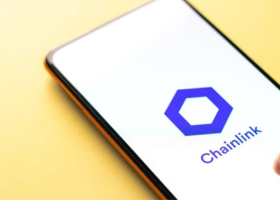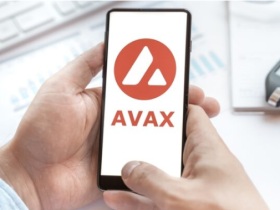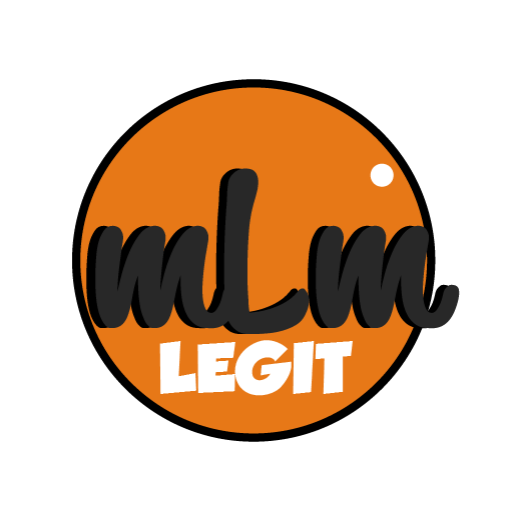Introduction to Blockchain and Database
Digital data and binary syntax can now be recorded permanently thanks to blockchain technology. Despite this, computers and processors have always had the capacity to store, handle, and process data, even before the invention of blockchain. Therefore, Blockchain may appear to be merely another alternative technology that allows users to store data. Despite the fact that they are fundamentally distinct technologies, blockchains and databases both provide their users with a variety of benefits and utilities that are not comparable to those of the other. In this article, the reader will learn the primary distinction between databases and blockchains, as well as which technology is more advantageous.
What are Blockchains?
Blocks and chains are the two words that were combined to form the portmanteau that is known as blockchain. Each node can store a certain number of blocks, which is the smallest amount of transactional data that can be transmitted between them at once. Blockchains are decentralized digital ledgers that can store data across a distributed network of servers without the need for a central administrator to monitor or manage the database. What this also means is that information stored or accessed via a blockchain can be accessed by anyone, at any time, regardless of where they happen to be located in the world. Blockchains do not require centralized administrators to function. In addition to issuing digital currencies such as Bitcoin, Ethereum, and Litecoin, etc., blockchains can also be used to create other cryptocurrencies. They can support the DeFi ecosystem and host dApps.
MORE ARTICLES
After spoofing an exploit, Convex Finance has launched two URLs.
Liberia’s Prospects for Bitcoin Trading in the Near Future
Binance Launches Platform for Institutions and VIPs: Report
In its most basic form, a blockchain is a computer program or piece of software. It does not require any manual operators, supervisors, or centralized regulators thanks to a technology known as Digital Ledger Technology (DLT), which enables it to stay online around the clock. Blockchains enable users to securely record and store data, such as digital transactions, on each block and then share that data across a network of distributed, cryptographically-secure servers. What this implies is that blockchains are not dependent on a solitary private server. Multiple copies of the blockchain exist at all times on servers located around the globe.
The Blockchain: How Does It Function?
The mining process entails decrypting encrypted blocks on the blockchain using computational power. The miners solve the puzzle on the block, which gives them the ability to validate the transactions on the block and add it to the blockchain. Anyone who is connected to a blockchain has the ability to read, keep track of, and view all of the transactions that have taken place on the network ever since it was first created. Cryptocurrencies, also known as fungible tokens or coins, are issued by blockchains. These fungible tokens or coins can be used to carry out a variety of financial transactions, including buying and selling, exchanging, lending, and borrowing, and many more.
Blockchains employ smart contracts, which are automated computer programs that continue to execute complex operations under specific conditions. Anyone with a computer and access to the internet can join a Blockchain network without the involvement of intermediaries like governments or financial institutions. When conducting financial transactions on a national or international scale, blockchains eliminate the requirement to use physical currency and extensive documentation.
Secure Blockchains
The networks that make up private blockchains are centralized, regulated, and permission less. It indicates that not everyone is permitted to participate in network activities. A private blockchain will only allow personnel who have been checked out and given permission to access the network. Users’ rights within a private blockchain are determined solely by their assigned roles. In a private blockchain, not every user will have access to every function and piece of information. Private blockchains are not typically open-source projects.
Distributed ledgers
Blockchains that are accessible to the public are permissionless, permissionless networks that are not governed by any central authority. Public blockchains make it possible for users from any part of the world to join the network and participate in transactions. When it comes to the validation of transactions on the network, public blockchains have the option of employing either a Proof-of-Work or Proof-of-Stake mechanism. Due to the open nature of public blockchains, any programmer in the world is free to study and modify the underlying code as they see fit. Public Blockchains are also referred to as trusted networks because they employ smart contracts to prevent fraud.
Multi-Chain Systems
Hybrid Blockchains are distributed ledger systems that combine public and private components in their network architecture. A portion of the operations and sections of such a blockchain are managed by a third-party commercial organization. The majority, meanwhile, is restricted and dedicated to consumers or public users. The monetary details and data stored on a hybrid blockchain are immune to tampering by private organizations, which is a major advantage of this type of distributed ledger.
Organizational Blockchains
One definition of a consortium blockchain describes it as a shared or cooperative distributed ledger technology (DLT) network that serves as a junction for multiple businesses. The hub is built to facilitate various digital activities, such as supply chain data transfers, international payments, communications, etc. Also known as a Federated blockchain. The Consortium blockchain is run by a group of businesses working together, so it can keep sensitive information secret.
The meaning of a Database.
Today, so many individuals utilize social media and email accounts. Numerous websites on the internet enable users to create individual accounts, upload files, and engage in various activities. In addition, none of this data is stored on the computer or mobile device. This is due to the fact that these applications and websites have a private database. Databases are another type of program that enable businesses and individuals to collect, organize, and access their data. In contrast to blockchains, databases are hosted on a single server.
In the majority of instances, businesses maintain copies of the original database as backup data. On top of that, a database stores all of its information in one place and makes it accessible to users according to their level of authorization.
What is the Function of a Database?
When it comes to computer programs that facilitate user action, databases can be thought of as primitive versions of blockchains. The database not only facilitates user-to-user data sharing, but also centralizes data storage. If you know SQL, or Structured Query Language, you can get at any piece of data stored in a database. The database’s hierarchical structure ensures that only authorized users can access different levels and management privileges. The database information is stored in the form of a table containing fields for recording various arrays and sets of data known as attributes.
Variety of Databases
Structured Database
Databases organized in a hierarchical structure resemble trees in that users must ascend through the levels before reaching the desired information. The nodes in a database are organized according to parent-child relationships. A hierarchical database has multiple levels of restrictions, which indicates that it is designed to accommodate particular uses and provides management choices to users who have been validated and given permission to access the database.
Network Information System
Hierarchical databases come in a variety of forms, one of which is network databases. Network databases have a structure that resembles a tree, and each level of the hierarchy has its own set of restrictions. On the other hand, a network database’s child nodes might have more than one parent node. Network databases are integrated systems that permit the web-like flow of information.
Object-Relational Database
An object-oriented database is a storage and retrieval system where information is presented in the same way objects are. The objects in question have the potential to correlate with a wide variety of others. In order to build an OODB, programmers need to use an OO language.
File-based Database
Single-file databases, also called flat-file databases, store data in a single text file. In addition, the information on the text file is presented as a series of lines, with each line representing a separate record. It is not possible for a flat-data file to contain more than one tablet relationship, and it is very basic.
Multi-file Database
Relational databases, also known as multi-file databases, store multiple tabular collections of data in the form of rows and columns. These rows and columns are linked together by utilizing specialized key fields as the connecting mechanism. A database with multiple files can provide functions such as upgrading, creating, editing, deleting, and reading. Using SQL, a relational database can have an easily navigable and accessible user interface built for multiple platforms.
Relational Database Alternatives
A NoSQL or non-relational database enables the storage and management of massive amounts of data. These databases are able to manipulate unstructured and semi-structured data. The likes of key-value storage, graph-based statistics, and document storage are all made possible by their implementation.
In terms of their fundamental functionality, private blockchains and databases may appear to be the same entity. Nonetheless, based on their functionalities and technical structures, they possess a range of distinctive characteristics. A private blockchain and a database are both centralized entities that are accessible only to authorized users. Similarly, databases allow the centralized authority to delete information, whereas private blockchains only grant read and write permissions to the highest authority.
Nevertheless, a private blockchain remains an innovative technology that provides data security via cryptography. In contrast, databases are less secure than private blockchains. Unlike databases, private blockchains ensure the accuracy, completeness, and consistency of all recorded information. While the architecture of the database is based on a client-server model, private blockchains use a peer-to-peer model for their data storage and transaction processing. Private Blockchains can also be partially decentralized, whereas databases are entirely centralized.
Important Distinctions Between Blockchain and Database
It is time to investigate the primary distinctions between databases and Blockchains now that the fundamental characteristics of both types of systems as well as their core structures have been clarified. Initially, the functionality of blockchains and databases may appear to be quite similar. However, they have numerous distinguishing characteristics, which are described below:
Authority
Data storage is the primary function of both databases and blockchains. Blockchains, on the other hand, are typically distributed while databases are centralized. Blockchains have a higher level of security and data protection than databases due to their decentralization. One step forward in application development is the use of distributed systems, which allow programs to continue running with less oversight. It also implies that all blockchain users have the same level of access and authority within the network.
In the meantime, due to the centralized nature of databases, only the administrators are granted access to and control over the information contained within them. Database administrators have the ability to grant other users, such as node validators and editors, restricted privileges within the database. However, administrative privileges are restricted to ensure that the database remains secure and inaccessible to hackers and threat actors.
Architecture
A client-server architecture is the foundation upon which a database’s backend and infrastructure are built. It indicates that users have access to a portion of the database, such as the user interface. Databases are built with scalability and large-scale use in mind, and the presence of servers means that they can act as a centralized processing unit for either small or large-scale operations. The clients that are connected to the database are able to communicate with one another while still keeping the record on the server. At the same time, databases also have the ability to secure communication through the use of secure connection channels.
On the other hand, blockchains are predicated on a peer-to-peer model at their very foundation. It indicates that users can conduct transactions using encrypted protocols. For the verification of the decentralized network nodes, blockchains rely on consensus mechanisms such as Proof-of-Work (PoW). No administrator is required to maintain the data on a blockchain-like database. Smart contracts are responsible for performing each and every function that can be found on blockchains.
Data Processing
Data processing techniques on blockchain and databases are radically dissimilar. Keeping in mind the CRUD principles makes it possible to store and utilize the data on a database in a relatively straightforward manner (Create, Read, Update, and Delete). It also implies that a database administrator has the ability to remove or alter data at their discretion. Meanwhile, Blockchains utilize DLT to store data. It indicates that copies of all verified transactions are sent to each and every blockchain server. Since blockchain only permits read and write operations, no one is able to modify or alter the information stored on a blockchain.
Transparency
The hierarchical nature of most databases makes it difficult, if not impossible, for any user to gain access to the system’s inner workings or the data it stores. Only the top-level administrator has access to the ability to upgrade and modify database content. Users can only access database functions that have been authorized by an administrator. In order to ensure network security, database administrators impose stringent restrictions on the system.
However, because blockchains are distributed ledger technology, all of the data stored on the network is available to any user. As the blockchain is distributed and its code is freely available, anyone can view the network’s transaction history and the code itself. It’s possible that users of private blockchains won’t be able to access all of the data, but even the administrator won’t be able to delete or change the information that’s already there.
Immutability
Having a central database for all the data associated with a single system or application is a huge time saver. A database’s administrators, however, have complete freedom to alter the structure and data whenever they see fit. In the case of a database, the administrator does not require user approval to make such modifications.
A blockchain, on the other hand, does not permit any user to make changes to its core structure or digital ledger. When data exists in thousands of copies on thousands of servers around the world, it becomes nearly impossible to modify or change that data without having access to an enormous amount of computational power. However, rather than overhauling the framework upon which blockchains are built, developers may choose to add second-layer projects that improve blockchain performance.
Operating Expenses
Since blockchains are still a developing technology, databases can be implemented at a lower cost. There are many programmers available who are knowledgeable in database design, administration, and enhancement because databases have been around for decades. There may be less money spent on setting up a database, but there will be more money spent on keeping it running. Since databases require constant human supervision and active monitoring to ensure their security against foreign threats, they must be constantly monitored.
On the other hand, blockchains are impenetrable to attacks from outside sources because they are encrypted. Moreover, due to a dearth of blockchain developers, the pay grade is higher than that of others. In contrast, database engineers are more readily and affordably available. Companies that want to develop a decentralized application must invest significantly more in talent acquisition.
Performance
A database has superior performance and processing speed compared to blockchain. However, in this instance, the highest speed is not necessarily the most efficient output. Since blockchains use cryptography to secure the network’s information, it takes longer to verify each transaction. This means that, despite being slower, the data stored on a blockchain is significantly more secure than database records. Blockchains use the Signature verification method to confirm the authenticity of each new transaction by generating a unique code.
Cryptographic codes are decrypted and the new block is added to the blockchain after verification, with blockchains using a variety of consensus models to accomplish this. The transactions on a blockchain are validated by every node in the network, which is time-consuming. However, developers are continually working to improve the performance of blockchains by increasing the blocksize or upgrading the consensus models, as these technologies are still relatively new.
Utility
Databases are used to support applications, software, and websites that require a constant flow of data. Databases are beneficial for storing sensitive information. Financial wire transfers and other online transactions can be completed quickly. There is no data verification mechanism in place.
Databases are independent applications that operate on their own and rely on relational information. On the other hand, Blockchains are utilized for the process of exchanging value, carrying out monetary operations, operating decentralized applications, conducting voting, storing data, ensuring its accuracy, participating in community-governed networks, and issuing cryptocurrencies.
Conclusion
Databases and distributed ledgers are two distinct and essential technologies. Each type of technology serves a distinct purpose, and both have advantages in certain respects. However, if developers can solve problems such as scalability, decentralization, and transaction speed, amongst others, it is possible that blockchains will one day replace all databases. This could happen in the distant future.
Tokenhell.com is dedicated to producing content of the highest possible quality for the purpose of exposing cryptocurrency and blockchain businesses and startups. To date, we have provided brand exposure for tens of thousands of businesses, and you can be one of them! All of our clients appreciate our value / pricing ratio. Contact us if you have any questions: info@tokenhell.com. Because cryptocurrencies and digital tokens are extremely volatile, you should do your own research before making any decisions regarding investments. The opinions expressed in posts that were not written by the site’s authors but were instead paid for (such as Crypto Cable, Sponsored Articles, and Press Release content) do not represent the site’s stance. Tokenhell disclaims any and all responsibility for the content, accuracy, quality, advertising, products, and any other content that may be found on the website. Read the complete terms of service / disclaimer.











 Bitcoin
Bitcoin  Ethereum
Ethereum  XRP
XRP  Tether
Tether  Solana
Solana  Dogecoin
Dogecoin  USDC
USDC  Cardano
Cardano  Lido Staked Ether
Lido Staked Ether  TRON
TRON  Chainlink
Chainlink  Avalanche
Avalanche  Sui
Sui  Wrapped stETH
Wrapped stETH  Wrapped Bitcoin
Wrapped Bitcoin  Stellar
Stellar  Toncoin
Toncoin  Hedera
Hedera  Shiba Inu
Shiba Inu  Polkadot
Polkadot  WETH
WETH  LEO Token
LEO Token  Bitcoin Cash
Bitcoin Cash  Litecoin
Litecoin  Hyperliquid
Hyperliquid  Bitget Token
Bitget Token  Official Trump
Official Trump  Uniswap
Uniswap  Pepe
Pepe  Wrapped eETH
Wrapped eETH  USDS
USDS  NEAR Protocol
NEAR Protocol  Ethena USDe
Ethena USDe  Aave
Aave  Aptos
Aptos  Internet Computer
Internet Computer  Ondo
Ondo  WhiteBIT Coin
WhiteBIT Coin  Ethereum Classic
Ethereum Classic  Cronos
Cronos  Monero
Monero  Mantle
Mantle  POL (ex-MATIC)
POL (ex-MATIC)  Render
Render  Dai
Dai  Algorand
Algorand  MANTRA
MANTRA  Bittensor
Bittensor 
Leave a Reply